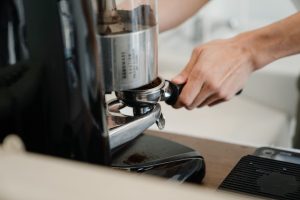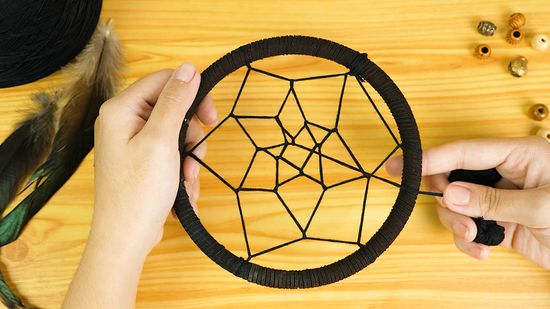Introduction:
Meet James Hoffmann, an industry-renowned coffee connoisseur and former World Barista Champion. With over a decade of experience in the coffee world, James has mastered every facet of brewing, including a deep understanding of maintaining pristine coffee makers, you’ll dive into the world of coffee maker cleaning, unlocking the secrets to brewing perfection. Whether you’re a seasoned enthusiast or just starting your journey into the coffee realm, James’ expert insights will help you achieve that flawless brew. So, get ready to immerse yourself in the world of coffee maker cleaning. we’ll unveil the secrets, tips, and tricks that will empower you to master the art of maintaining a spotless coffee maker. James Hoffmann’s expertise will serve as your compass, ensuring that every cup of coffee you brew is nothing short of perfection.

Importance of Cleanliness
Your morning cup of coffee is more than just a caffeine kick; it’s an experience. And at the heart of that experience is the cleanliness of your coffee maker. Whether you have a simple drip brewer, a French press, or a high-end espresso machine, the cleanliness of your equipment significantly impacts the taste and quality of your coffee. Coffee is a delicate beverage that readily absorbs odors and residues. A dirty coffee maker can lead to a bitter taste, strange odors, and even health concerns. The oils from coffee beans, minerals in water, and the remnants of old brews can accumulate over time. But fret not; James Hoffmann has the solution.
Avoiding Residue
James emphasizes that the key to brewing perfection lies in eliminating residue and bitter tastes. Even the slightest residue can compromise the flavors and aroma of your coffee. To avoid this, regular and thorough cleaning is essential. James suggests that by understanding the importance of cleanliness, you’re already on your way to becoming a coffee brewing maestro.

The Essential Cleaning Supplies
James Hoffmann’s toolkit for coffee maker cleaning is a carefully curated set of items that every coffee lover should have. Here’s a detailed list of must-haves:
- Bristle Brush: This is used to scrub parts that are hard to reach, like the inside of the coffee maker’s water reservoir.
- Soft Cloth: A soft, lint-free cloth is perfect for wiping down exterior surfaces and removing coffee stains.
- Dish Soap: Mild dish soap is crucial for removing coffee oils and build-up.
- Vinegar: White vinegar is a natural descaling agent, ideal for removing mineral deposits.
- Cleaning Tablets: If you have a high-end espresso machine, James recommends using cleaning tablets designed specifically for your model.
- Toothbrush: A toothbrush is perfect for cleaning smaller components and crevices.
- Microfiber Towel: Great for a final, lint-free polish.
- Water Filter: Consider using a water filter to reduce mineral deposits in your coffee maker.

Spotless Machine
For a spotless coffee maker, daily maintenance is crucial. These are the quick and simple daily cleaning steps that James recommends:
- Empty the Coffee Grounds: After every brew, empty the coffee grounds and wash the filter basket.
- Wipe the Exterior: Use a soft cloth to wipe down the exterior of your coffee maker. This will prevent coffee stains and build-up.
- Rinse the Carafe: Rinse the coffee pot with warm water after each use.
A Deep Dive into Weekly Cleaning
James Hoffmann’s weekly cleaning ritual is where you’ll truly learn to master the art of coffee maker cleaning. Here’s a sneak peek into what he does:
- Unplug and Disassemble: Always unplug your coffee maker before cleaning. Disassemble removable parts like the filter basket and carafe.
- Scrub with Brush and Soapy Water: Using your bristle brush and mild soapy water, scrub the removable parts and the inside of the machine.
- Descale with Vinegar: Fill the water reservoir with a mixture of equal parts water and white vinegar. Run a brewing cycle without coffee to descale the machine.
- Rinse Thoroughly: After descaling, rinse your coffee maker thoroughly with plain water to remove any vinegar residue.
- Dry and Reassemble: Allow all components to dry completely before reassembling your coffee make.
Photo by Chevanon Photography: https://www.pexels.com/photo/white-ceramic-mug-on-espresso-machine-filling-with-brown-liquid-302894/
Monthly Maintenance
Monthly maintenance is a critical but often underestimated aspect of coffee maker care. It serves as a proactive measure to prevent breakdowns and extend your machine’s lifespan. Begin by conducting a thorough inspection to spot any signs of wear or damage. Follow the manufacturer’s guidelines for long-term care, as they are specific to your coffee maker’s make and model. It’s equally essential to know how to troubleshoot common issues, such as a machine that stops working or off-tasting coffee. Addressing these problems promptly can save you time and money. In addition to routine maintenance, consider lubricating moving parts and inspecting gaskets and seals, as damaged components can affect the quality of your brew. By integrating monthly maintenance into your coffee maker care routine, you’ll ensure a machine that’s ready to consistently brew perfect coffee for years to come.
Machine Stops Working
A sudden breakdown of your coffee maker can be frustrating, but before you panic, start with the basics. First, check the power source to ensure your machine is correctly plugged in and that the electrical outlet is functioning. Sometimes, what appears to be a breakdown might be as simple as an oversight. By beginning your troubleshooting with this step, you might quickly resolve the issue and have your coffee flowing again in no time.

Troubleshooting
In the world of coffee-making, occasional hiccups can be inevitable, but they needn’t disrupt your morning routine. Understanding how to troubleshoot and address common issues is key to keeping your coffee maker in top form. This section explores the common problems that might arise and the solutions to keep your coffee maker brewing smoothly. Off-Tasting Coffee: If your coffee starts tasting off, it can be a sign that something is amiss. Most often, this is an indicator that a thorough cleaning is long overdue. Coffee makers accumulate residue, oils, and old coffee grounds over time, affecting the purity of your brew. Start by performing the weekly cleaning ritual we discussed earlier, ensuring that your coffee maker is free from any residual oils or old coffee grounds.

Cleaning Techniques
For those seeking the pinnacle of coffee perfection, advanced cleaning techniques are the gateway to a brew that rivals your favorite café. These techniques go beyond the basics, delving into the intricate care required by high-end espresso machines and specialized equipment.
- Regular Backflushing: For those fortunate enough to own high-end espresso machines, regular backflushing is a game-changer. This process involves pushing water through the group head without coffee to clean the machine’s intricate components. By doing this, you prevent the build-up of oils and coffee residue, ensuring each shot of espresso is pristine.
- Water Softeners: Water quality significantly impacts the taste and longevity of your coffee maker. Consider using a dedicated water softener or filter to reduce mineral deposits and maintain the purity of your brewing water. This simple addition can have a profound impact on the quality of your coffee.

Main points of the Troubleshooting
| Issue | Possible Cause | Solution |
|---|---|---|
| Off-Tasting Coffee | Accumulated residue, old grounds | Perform weekly cleaning, consider filter replacement if applicable. |
| Machine Stops Working | Power source issues, loose connections | Check the power source, ensure the outlet is functioning. |
| Inconsistent Brewing | Filter placement, grind size | Verify proper filter seating, adjust grind size for consistency. |
| Leaks and Drips | Damaged components, worn seals | Inspect water reservoir, carafe, and seals, replace damaged parts. |
| Clogged or Slow Flow | Mineral Deposits | Descaling with water-vinegar mixture, then plain water cycles. |
Conclusion:
In the pursuit of that perfect cup of coffee, you’ve embarked on a journey that combines the art of brewing with the science of maintenance. we’ve had the privilege of exploring the world of coffee maker cleaning under the guidance of a true expert, James Hoffmann. With over a decade of experience in the coffee industry, including a prestigious World Barista Championship title, James has shared his wisdom to help you elevate your coffee game. We began by understanding the crucial role that cleanliness plays in the coffee-making process. A clean coffee maker isn’t just a matter of aesthetics; it’s the foundation of every great brew. We explored the essential cleaning supplies and how to choose the right products. Daily and weekly cleaning rituals became second nature, preventing residue and ensuring the longevity of your beloved machine. Monthly maintenance was unveiled as the secret to preventing breakdowns and extending the life of your coffee maker. Finally, we delved into the world of advanced cleaning techniques, ideal for those who demand the utmost purity in their coffee. we learned not only how to maintain our coffee makers but also to appreciate the intricate process that occurs behind the scenes. Each cup of coffee is a testament to your dedication to the craft, and now you hold the knowledge to ensure that every brew is nothing short of perfection.










